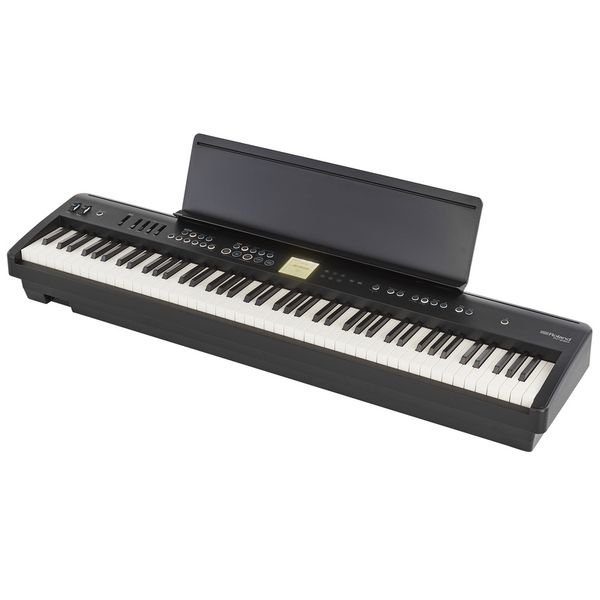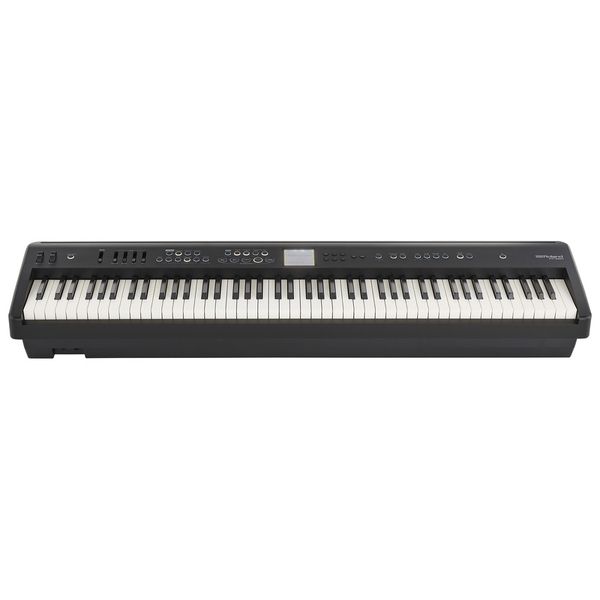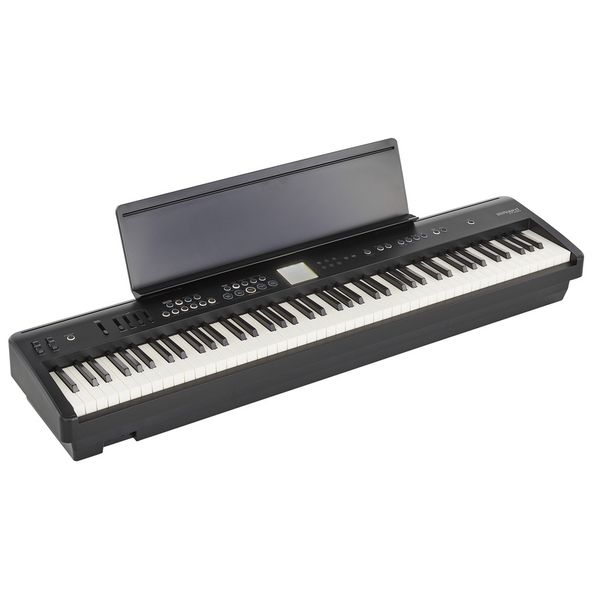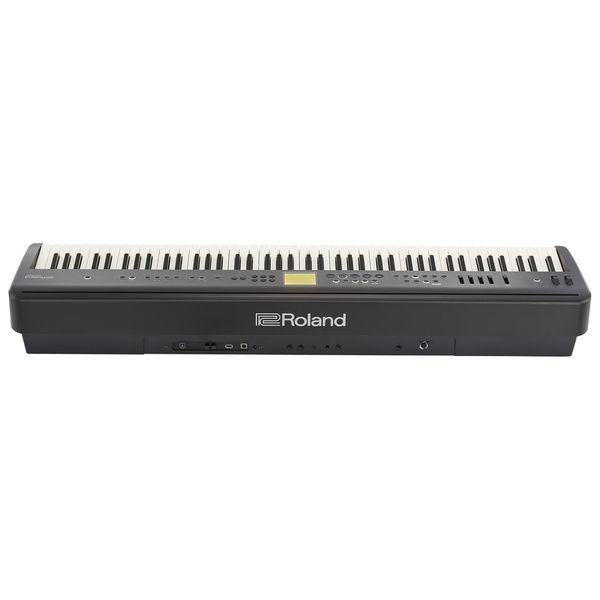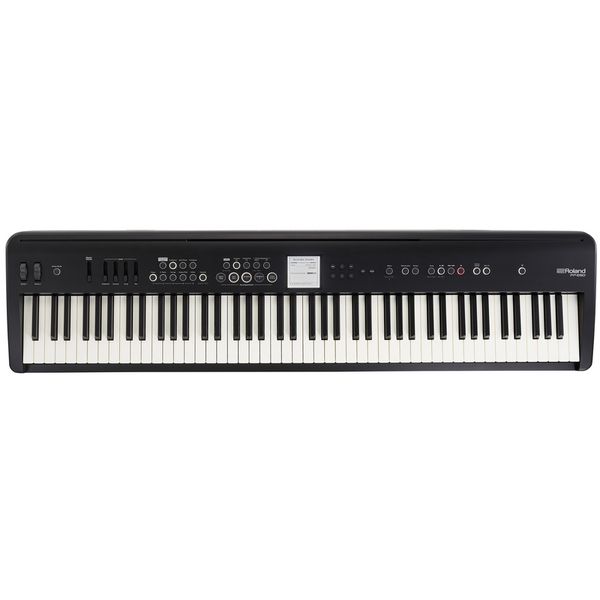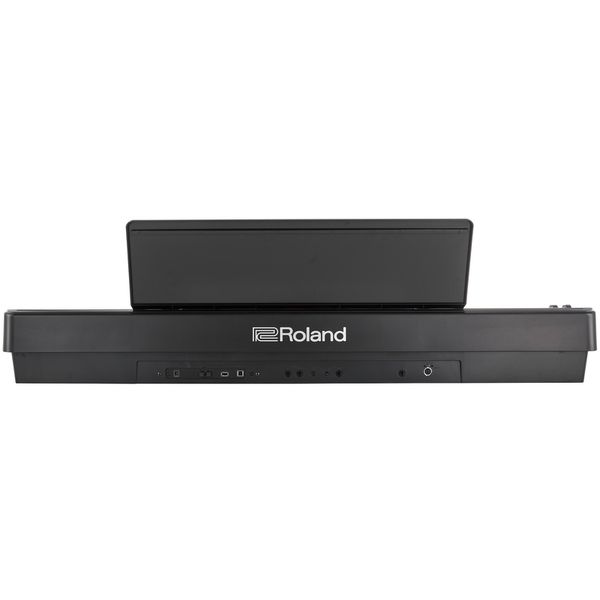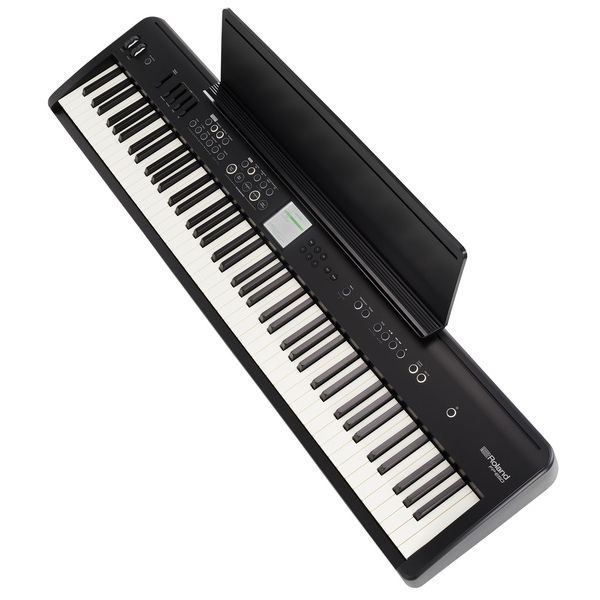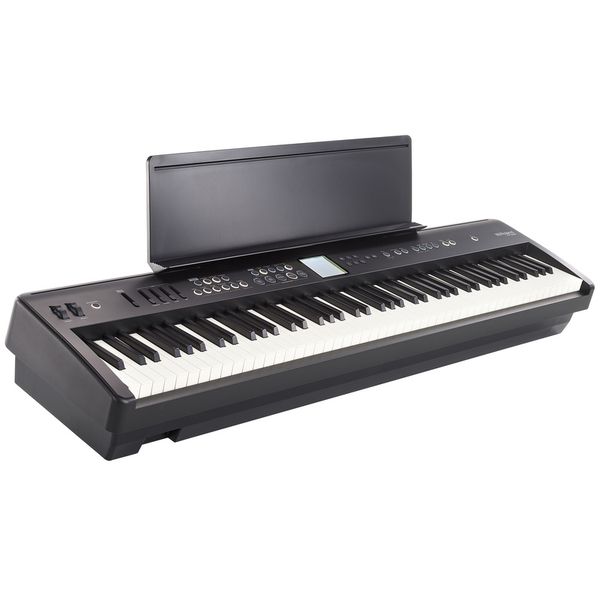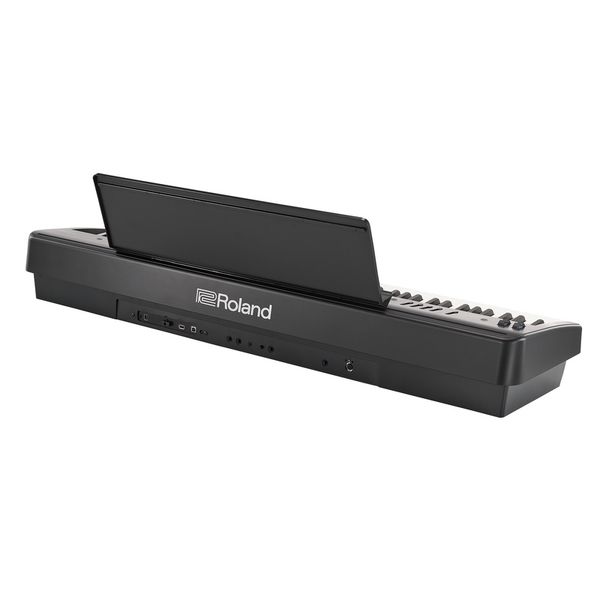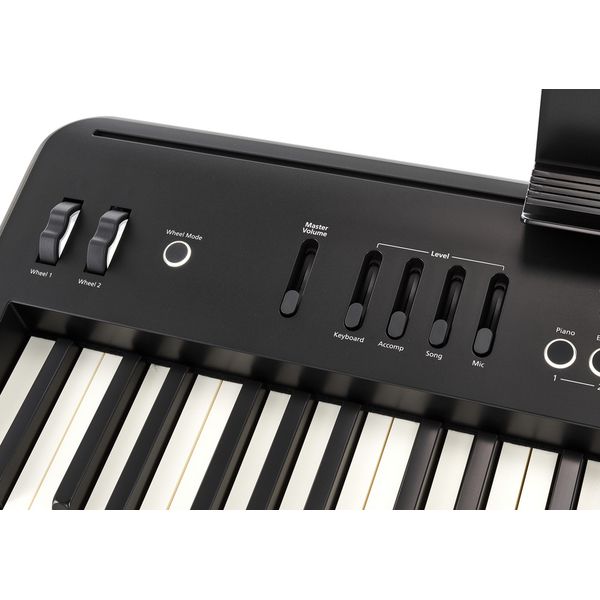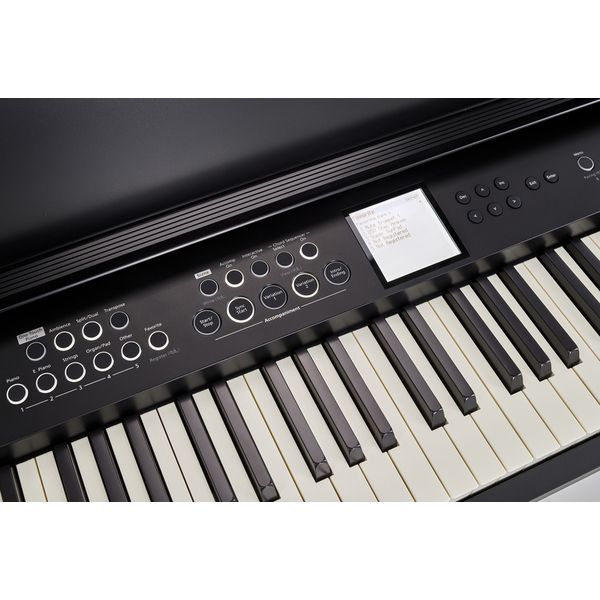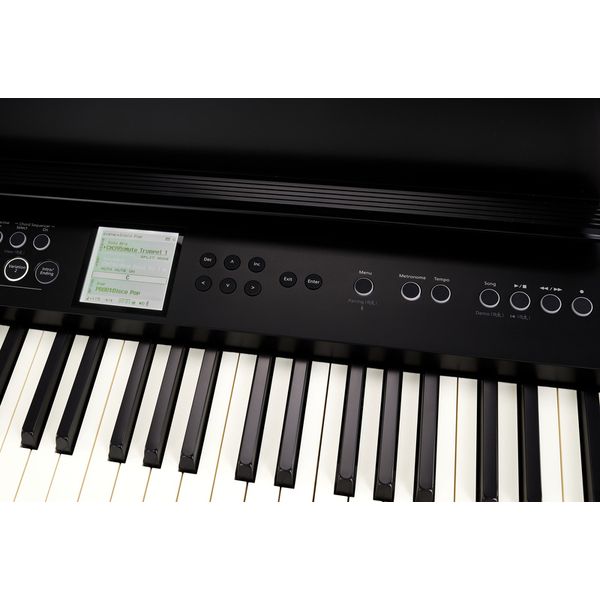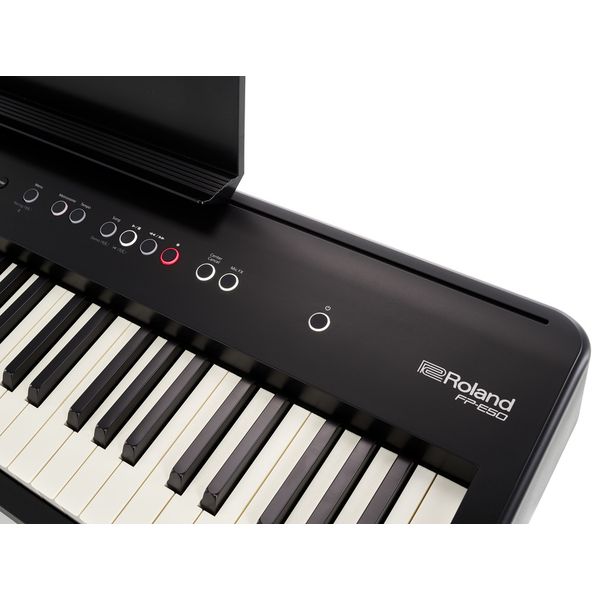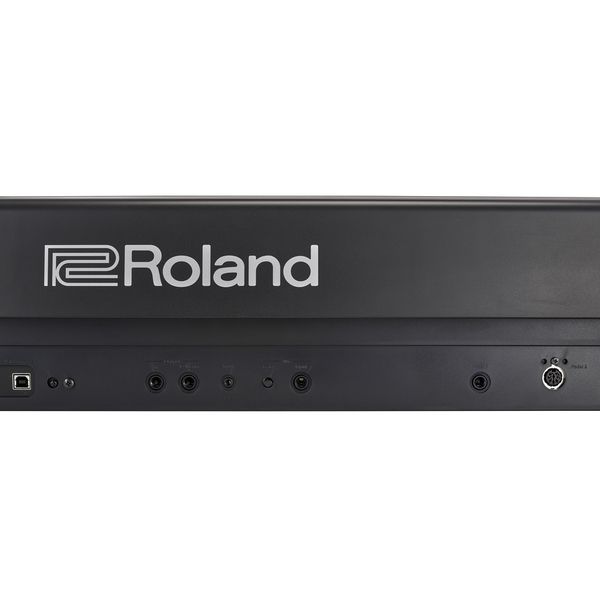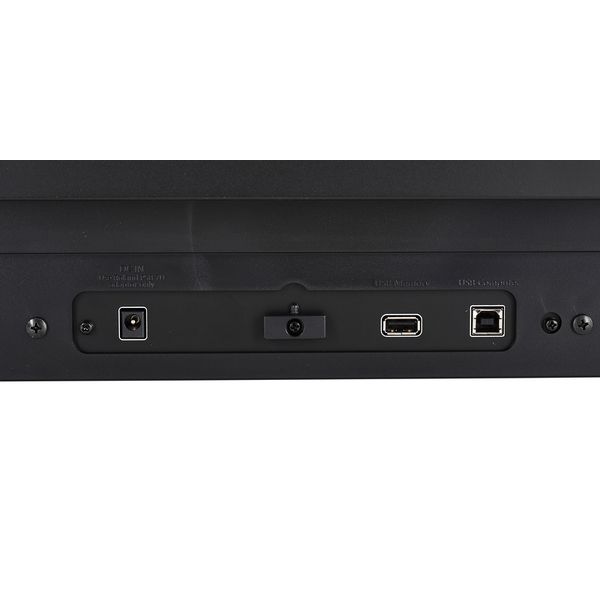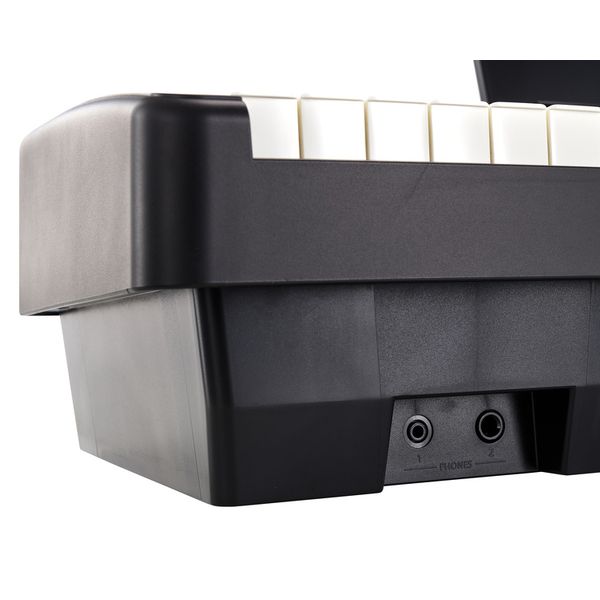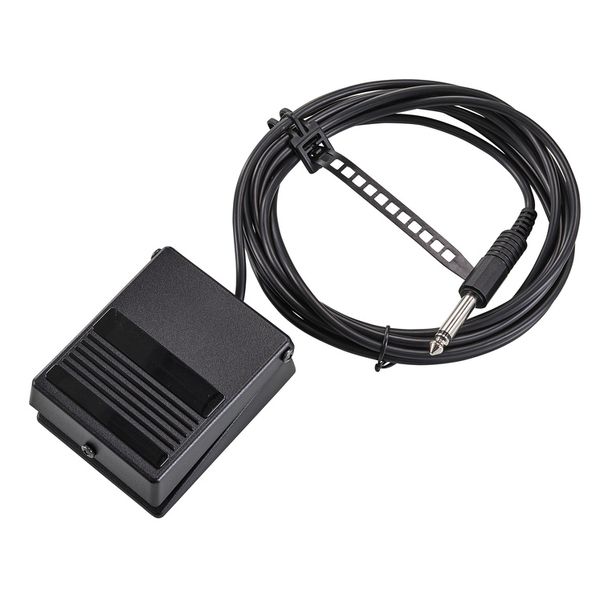Unpacking the FP-E50, the first thing to notice is that it is visually very pleasing. I bought it with the matching stand (KSFE50) and triple pedal set (KPD-70) and it really looks great in the corner of the living room.
I was excited to try out my new purchase. The first piano sound that I chose to play was the factory default setting, which is the ‘Concert Piano’. What a disappointment. Just playing a single note, middle C, I noticed that there was something strange about it. It’s difficult to explain what. The best way I can describe it is that the decay seems to be artificially delayed. This means that, for the first fraction of a second, a constant tone is played, more akin to what you’d expect from an electronic organ. Thereafter, it decays in the way that you would expect to hear from a percussion-stringed instrument. This problem seems to be more noticeable in the centre of the keyboard than at the upper and lower ends.
My heart sank as the thought came to me that if this was what Roland was presenting as the best piano sound that the instrument could offer, what was the rest of it going to sound like? There are three types of acoustic piano sounds available: ‘SuperNATURAL’ (to which ‘Concert Piano’ belongs), ‘Preset’ and ‘Common’. The only ‘Preset’ piano sounds that come with the instrument are ‘Dynamic JD-Piano’, ‘Magical Piano’ and ‘Piano+Str Layer’, none of which you are going to want to play if you are looking for an acoustic piano sound. The best ‘Common’ piano sounds, ‘Piano 1’ and ‘Piano 2’ are both noticeably out of tune in F major (try F2 in the left hand and C4+F5+A5 in the right), so that ruled those out. So, I spent the next week tinkering with the ‘Piano Designer’ and ‘Ambience’ settings, in an attempt to find a likeable ‘SuperNATURAL’ sound that I might be able to live with. The Piano Designer has a ‘Lid’ parameter which is supposed to mimic how a grand piano would sound according to the degree to which the lid is opened. The problem I encountered is that, with the Lid parameter set to a high value (open), the strangeness of the piano sound became magnified, but, with the parameter set to a low value (closed), the piano sound become muffled. Bear in mind that I was listening to all of this through headphones, so this has nothing to do with the quality or orientation of the built-in speakers, although I can confirm that it was no better through the speakers. The default ‘Ambience’ is called ‘Concert Hall’ and I discovered that, again, this only had the effect of magnifying the strangeness of the piano sound. I found that only with the Ambience set to ‘Lounge’ were the piano sounds tolerable. Out of the 34 acoustic piano sounds that come with the instrument, I rate the ‘Piano Performer’ and ‘Bright Piano’ as ‘tolerable’ with ‘Lid’ set to 2 or 3. I don’t find the ‘Concert Piano’ to be tolerable, no matter what the settings.
Some of the ensemble strings sounds are curious. For example, when playing ‘Full Strings’, the instant that you take your fingers off the keys the sound stops dead. This is not alleviated by slow release of the sustain pedal. The only way to make this sound tolerable is to set the ‘Kbd Ambience Send’ (reverberation) to a high value via the menu settings.
For all these reasons, I can only rate this instrument 3 out of 5. But what does a person mean by ‘3 out of 5’? Just in case you think I am an acoustic-piano snob, who is not happy with any digital piano that doesn’t sound 100% exactly like a world-class concert grand piano, you should know what my benchmark is. The instrument that I am replacing is a Yamaha PSR-E323 61-key keyboard. This doesn’t have weighted keys, so the play and feel of the PSR is obviously completely inferior. But, despite its 2009 technology, it has a more pleasing piano sound than the Roland FP-E50. It seems to me that, over that time, Roland has put so much effort into the feel and play action of the keys that they have neglected what must surely be the most important part of any musical instrument: the sound. Judging by the amount of criticism online generally about the play action of digital pianos, I can only suppose that this is what the market demands and Roland have responded to those demands.
The words ‘SuperNATURAL piano with ZEN-Core sound engine’ do really sound impressive but, no matter how many times I say those words, the piano sound doesn’t. I doubt that any classical pianist would be happy with this instrument but, judging by the positive reviews that this product receives, there appear to be many people who love it. The keys look and feel great and I have no complaints about the play action. I certainly haven’t had any problems with clicking or bouncing keys that other reviewers have mentioned. You can produce some really great sounds with this instrument. For example, the imperfections of the piano sound can be masked by layering it with another sound, such as ‘CharacterStrings’ or ‘Air Pad’. The result sounds wonderful.
My advice is: (1) The special features of any digital piano are only worth it if the core sounds are good. (2) When listening to demonstrations, don’t allow yourself to be influenced by how much you like the piece of music. You could learn much about the quality of the piano sound from hearing a simple scale in C major played with one hand. (3) The FP-E50 might be the right piano for you, but I recommend that you try before you buy, something I wasn’t able to do.


